The Sandy Bridge Review: Intel Core i7-2600K, i5-2500K and Core i3-2100 Tested
by Anand Lal Shimpi on January 3, 2011 12:01 AM ESTThe 6-series Platform
At launch Intel is offering two chipset families for Sandy Bridge: P-series and H-series, just like with Lynnfield. The high level differentiation is easy to understand: P-series doesn’t support processor graphics, H-series does.
There are other differences as well. The P67 chipset supports 2x8 CrossFire and SLI while H67 only supports a single x16 slot off of the SNB CPU (the chip has 16 PCIe 2.0 lanes that stem from it).
While H67 allows for memory and graphics overclocking, it doesn’t support any amount of processor overclocking. If you want to overclock your Sandy Bridge, you need a P67 motherboard.
6Gbps
Had SSDs not arrived when they did, I wouldn’t have cared about faster SATA speeds. That’s how it worked after all in the evolution of the hard drive. We’d get a faster ATA or SATA protocol, and nothing would really change. Sure we’d eventually get a drive that could take advantage of more bandwidth, but it was a sluggish evolution that just wasn’t exciting.
SSDs definitely changed all of that. Today there’s only a single 6Gbps consumer SSD on the market—Crucial’s RealSSD C300. By the middle of the year we’ll have at least two more high-end offerings, including SandForce’s SF-2000. All of these SSDs will be able to fully saturate a 3Gbps SATA interface in real world scenarios.
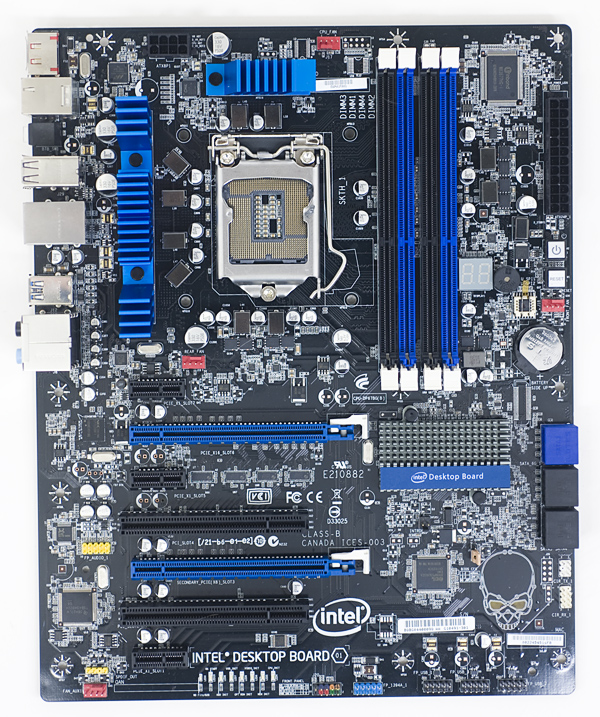
Intel's DP67BG—The blue SATA ports on the right are 6Gbps, the black ones are 3Gbps
To meet the soon to be growing need for 6Gbps SATA ports Intel outfits the 6-series PCH with two 6Gbps SATA ports in addition to its four 3Gbps SATA ports.
I dusted off my 128GB RealSSD C300 and ran it through a bunch of tests on five different platforms: Intel’s X58 (3Gbps), Intel’s P67 (3Gbps and 6Gbps), AMD’s 890GX (6Gbps) and Intel’s X58 with a Marvell 9128 6Gbps SATA controller. The Marvell 91xx controller is what you’ll find on most 5-series motherboards with 6Gbps SATA support.
I ran sequential read/write and random read/write tests, at a queue depth of 32 to really stress the limits of each chipset’s SATA protocol implementation. I ran the sequential tests for a minute straight and the random tests for three minutes. I tested a multitude of block sizes ranging from 512-bytes all the way up to 32KB. All transfers were 4KB aligned to simulate access in a modern OS. Each benchmark started at LBA 0 and was allowed to use the entire LBA space for accesses. The SSD was TRIMed between runs involving writes.
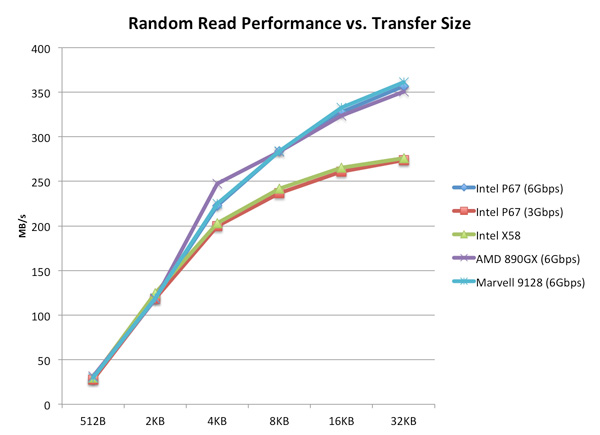
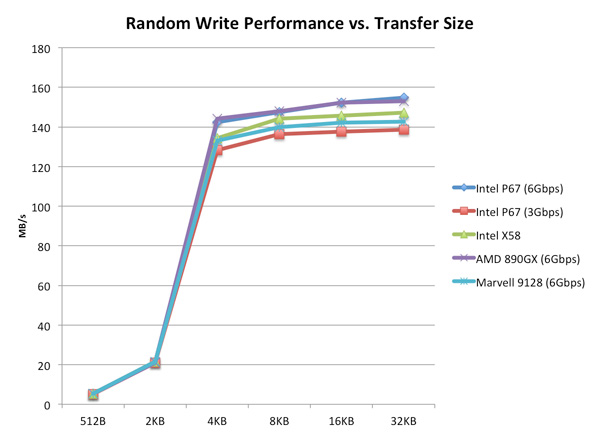
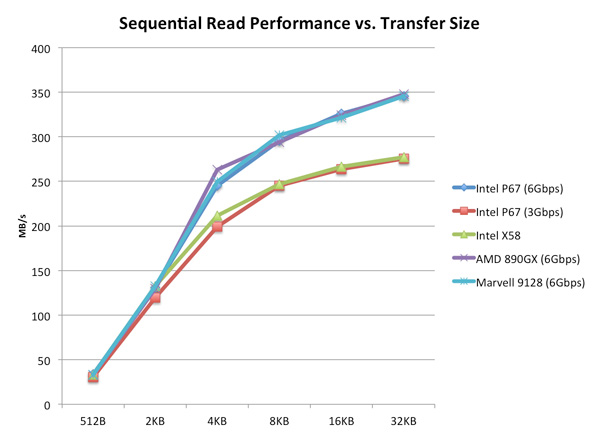
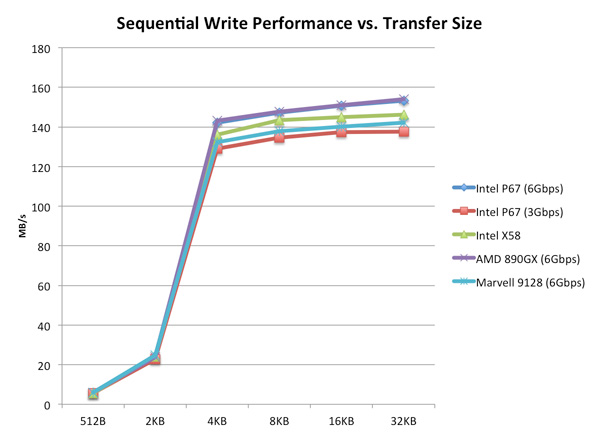
Among Intel chipsets I found that the X58 has stellar 3Gbps SATA performance, which is why I standardize on it for my SSD testbed. Even compared to the new 6-series platform there are slight advantages at high queue depths to the X58 vs. Intel’s latest chipsets.
Looking at 6Gbps performance though there’s no comparison, the X58 is dated in this respect. Thankfully all of the contenders do well in our 6Gbps tests. AMD’s 8-series platform is a bit faster at certain block sizes but for the most part it, Intel’s 6-series and Marvell’s 91xx controllers perform identically.
I hate to be a bore but when it comes to SATA controllers an uneventful experience is probably the best you can hope for.


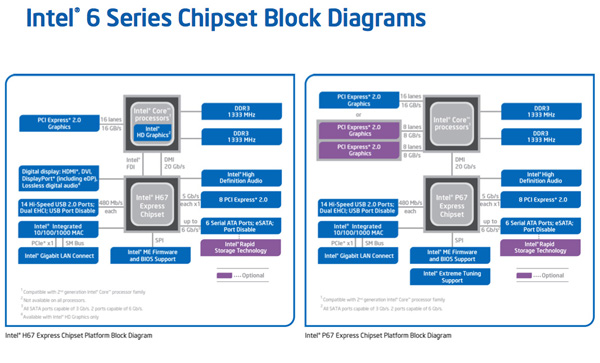








283 Comments
View All Comments
Exodite - Monday, January 3, 2011 - link
I'm of two minds about that really.I had really set my mind on the 2500K as it offers unparalleled bang-for-buck and real-world testing have shown that Hyper-threading makes little difference in games.
With the compile tests it's clear there's a distinct benefit to going with the 2600K for me though, which means this'll end up more expensive than I had planned! :)
Lazlo Panaflex - Monday, January 3, 2011 - link
FYI, the 1100T is missing from several of the gaming benchmarks.....Melted Rabbit - Monday, January 3, 2011 - link
It wouldn't surprise me if that was intentional. I would hope that Anandtech reviewers were not letting companies dictate how their products were to be reviewed lest AT be denied future prerelease hardware. I can't tell from where I sit and there appears to be no denial that stating there is no such interference.In addition, real world benchmarks aside from games looks to be absent. Seriously, I don't use my computer for offline 3D rendering and I suspect that very few other readers do to any significant degree.
Also, isn't SYSMark 2007 a broken, misleading benchmark? It was compiled on Intel's compiler, you know the broken one that degrades performance on AMD and VIA processors unnecessarily. Also there is this bit that Intel has to include with its comparisons that use BAPco(Intel) benchmarks that include Intel's processors with comparisons to AMD or VIA processors:
Software and workloads used in performance tests may have been optimized for performance only on Intel microprocessors. Performance tests, such as SYSmark and MobileMark, are measured using specific computer systems, components, software, operations and functions. Any change to any of those factors may cause the results to vary. You should consult other information and performance tests to assist you in fully evaluating your contemplated purchase, including the performance of that product when combined with other products.
It isn't perfect, but that is what the FTC and Intel agreed to, and until new benchmarks are released by BAPco that do not inflict poor performance on non-Intel processors, the results are not reliable. I don't see any problem if the graph did not contain AMD processors, but that isn't what we have here. If you are curious, for better or for worse, BAPco is a non-profit organization controlled by Intel.
Anand Lal Shimpi - Monday, January 3, 2011 - link
Hardware vendors have no input into how we test, nor do they stipulate that we must test a certain way in order to receive future pre-release hardware. I should also add that should a vendor "cut us off" (it has happened in the past), we have many ways around getting supplied by them directly. In many cases, we'd actually be able to bring you content sooner as we wouldn't be held by NDAs but it just makes things messier overall.Either way, see my response above for why the 1100T is absent from some tests. It's the same reason that the Core i7 950 is absent from some tests, maintaining Bench and adding a bunch of new benchmarks meant that not every test is fully populated with every configuration.
As far as your request for more real world benchmarks, we include a lot of video encoding, file compression/decompression, 3D rendering and even now a compiler test. But I'm always looking for more, if there's a test out there you'd like included let me know! Users kept on asking for compiler benchmarks which is how the VS2008 test got in there, the same applies to other types of tests.
Take care,
Anand
Melted Rabbit - Tuesday, January 4, 2011 - link
Thanks for replying to my comment. I was understand why the review was missing some benchmarks for processors like the 1100T. I was also a bit hasty in my accusations with respect to interference from manufacturers, which I apologize for.I still have trouble with including benchmarks compiled on the Intel compiler without a warning or explanation of what they mean. It really isn't a benchmark with meaningful results if the 1100T is used x87 code and the Core i7-2600K used SSE2/SSE3 code. I would have no problem with reporting results for benchmarks compiled with Intel's defective compiler, like SYSmark 2007 and Cinebench R10 assuming they did not include results for AMD or VIA processors along with an explanation of why they were not applicable to AMD and VIA processors. However, not giving context to such results I find problematic.
DanNeely - Monday, January 3, 2011 - link
Sysmark2k7 is like the various 3dmark benches. Mostly useless but with a large enough fanbase that running it is less hassle than dealing with all the whining fanboi's/Anand Lal Shimpi - Monday, January 3, 2011 - link
There are a few holes in the data we produce for Bench, I hope to fill them after I get back from CES next week :) You'll notice there are some cases where there's some Intel hardware missing from benchmarks as well (e.g. Civ V).Take care,
Anand
Lazlo Panaflex - Monday, January 3, 2011 - link
Thanks Anand :-)MeSh1 - Monday, January 3, 2011 - link
Seems Intel did everything right for these to fit snuggly into next gen macs. Everthing nicely integrated into one chip and the encode/trascode speed boost is icing on the cake (If supported of course) being that Apple is content focused. Nice addition if youre a mac user.Doormat - Monday, January 3, 2011 - link
Except for the whole thing about not knowing if the GPU is going to support OpenCL. I've heard Intel is writing OpenCL drivers for possibly a GPU/CPU hybrid, or utilizing the new AVX instructions for CPU-only OpenCL.Other than that, the AT mobile SNB review included a last-gen Apple MBP 13" and the HD3000 graphics could keep up with the Nvidia 320M - it was equal to or ahead in low-detail settings and equal or slightly behind in medium detail settings. Considering Nvidia isn't going to rev the 320M again, Apple may as well switch over to the HD3000 now and then when Ivy Bridge hits next year, hopefully Intel can deliver a 50% perf gain in hardware alone from going to 18 EUs (and maybe their driver team can kick in some performance there too).